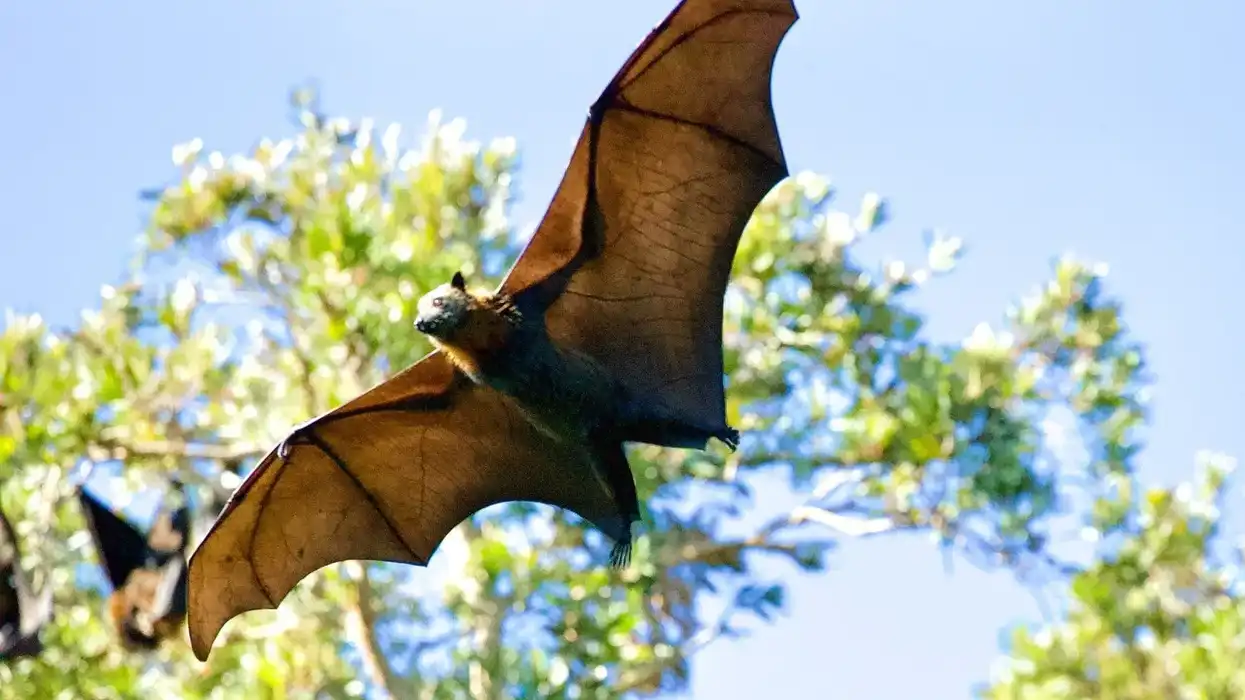The bat-eared fox's scientific name is termed 'Otocyon megalotis'. These foxes belong to the family of Canidae, order: Carnivora, kingdom: Animalia, phylum: Chordata, class: Mammalia, genus: Otocyon, species: O.Megalotis.
Bat-eared foxes are a small fox from South Africa who are known for their large ears, around 5 in (13 cm) tall.
This African bat-eared fox is sandy gray in color with a lighter fur on the belly and darker fur around the eyes, back of the ears, muzzle, feet, and tail tip. They have a great sense of hearing due to their large ears.
Various states prohibit the ownership of some, or all, species of foxes as pets. However, some exotic species of foxes, such as fennec and bat-eared foxes, are legal to own as pets in the state of Texas.
They are carnivores and 80% of their diet consists of insects such as dung beetles and harvester termites. The insects that bat-eared foxes eat fulfill the bulk of their water intake.
All the bat-eared foxes communicate using their large ears and tail, they are also used for thermoregulation. The bat-eared foxes run at a speed faster than 70 mph (112 kmph), meaning they can outrun cheetahs and lions. Bat-eared foxes are not an Endangered species, according to IUCN.
In fact, they are so common throughout their habitats that no overall population estimate is available. The male fox is called a 'dog' and a female is called 'vixen'.
Bat-eared foxes usually mate once in a lifetime. Breeding takes place between the period of September and November. The gestation period lasts between 60 to 70 days, after which the females give birth to between two and five babies.
A bat-eared fox baby is called a kit. The life span of a bat-eared fox is 13 years in captivity, but the maximum life span recorded was 17 years. Bat-eared fox predators include humans, jackals and birds of prey.
Here on our page, we have lots of bat-eared fox facts that everyone will enjoy. Let's have a look at these interesting facts, and if you do like them, then please read our utonagan and eurasian wolf facts.
Bat-eared Fox Interesting Facts
What type of animal is a bat-eared fox?
Bat-eared foxes are a different-looking species of fox that are found on the African savanna.
What class of animal does a bat-eared fox belong to?
The bat-eared fox belongs to the class of Mammalia.
How many bat-eared foxes are there in the world?
As the human population is expanding, humans cut down wildlife habitat in order to build new settlements, increase agriculture production, and build new roads. Due to this, the bat-eared foxes are losing their habitat.
Where does a bat-eared fox live?
Bat-eared foxes reside in eastern and south Africa, primarily in the savannas, brush, and grasslands. Others of their family (Canidae) are found in open and arid areas of eastern Africa and southern Africa. Bat-eared foxes usually live in groups of two to five. Each group usually has one adult and their young.
What is a bat-eared fox's habitat?
Bat-eared foxes like to live mainly in arid grasslands and short grass savannas.
Who do bat-eared foxes live with?
Bat-eared foxes live in pairs, along with their pups, in Eastern Africa. A family contains an adult male and up to three adult females with their pups.
How long does a bat-eared fox live?
The life expectancy of a bat-eared fox is 13 years in captivity. However, the maximum life span recorded for this animal was 17 years.
How do they reproduce?
Bat-eared foxes usually mate once in a lifetime. Breeding takes place between the period of September and November.
The gestation period lasts between 60 to 70 days, after this the females give birth to between two and five pups. Both the parents bring up the babies, and the babies open their eyes nine days after their birth. Youngsters begin to venture from the dens when they are 17 days old.
What is their conservation status?
The conservation efforts for bat-eared foxes are limited because, fortunately, they are very common in Southern and Eastern Africa. But, they are sometimes hunted for their pelts, or killed because they are believed to be pests to young livestock.
As the human population is expanding, natural wildlife is being cut down to make room for new homes, agriculture and roads. This means these foxes are quickly losing their natural habitats.
Bat-eared Fox Fun Facts
What do bat-eared foxes look like?
Bat-eared foxes (Otocyon megalotis) are a small African fox who are known for their ears. At around 5 in (13 cm), their ears are enormous and the most recognisable feature of these foxes.
They are sandy gray in color with a lighter fur on the belly and darker fur around the eyes, back of the ears, feet, muzzle, and tip of its long bushy tail.
How cute are they?
Yes, bat-eared foxes are very cute.
How do they communicate?
All the bat-eared foxes communicate using their large ears and tail no matter where they live. The foxes also use different varieties of soft whistles to communicate.
How big is a bat-eared fox?
The bat-eared fox size is relatively small for canids. They weigh between 6.6-11.9 lb (3-5.3 kg). The length ranges from 17.7-25.9 in (46-66 cm). The height of the shoulder ranges from 11.8-15.7 in (30-40 cm).
How fast can a bat-eared fox run?
Bat-eared foxes run at a speed faster than 70 mph (115 kmph), meaning they can outrun cheetahs and lions.
How much does a bat-eared fox weigh?
A bat-eared fox weighs around 6.6-11.9 lb (3–5.4 kg).
What are the male and female names of the species?
The male fox is called a 'dog' and a female is called a 'vixen'.
What would you call a baby bat-eared fox?
When a mother gives birth to the babies, they are called kits. These fox kits look like chihuahua pups but with much larger ears. The pups begin to venture from the dens when they are eight to 12 days old.
What do they eat?
Bat-eared foxes diet, since they are mainly carnivores, consists of 80% dung beetles and harvester termites. They eat insects to fulfill the bulk of their water intake desire. Bat-eared fox groups are able to forage on clumps of prey in patches
Are they aggressive?
These foxes are not considered as dangerous or aggressive.
Would they make a good pet?
No, they are wild animals. Having a bat-eared fox pet is not possible as they cannot be confined to domestic living. The weather conditions they live in makes it difficult for humans to survive, therefore, humans and bat-eared foxes cannot live together.
Did you know...
These foxes have 48 teeth, this is a lot compared to other mammals. They have sharp and pointed teeth which enable them to chew their food quickly and easily to aid digestion.
Bat-eared foxes play a vital role in controlling harvester termites population, which are considered as pests by farmers. They rarely drink water because they get most of the hydration that they need from their food.
What are male and female bat-eared foxes called?
The male is called a 'dog' and females are called 'vixen'.
How does the bat-eared fox's diet change with the seasons?
The bat-eared fox (Otocyon megalotis) lives in eastern and southern Africa, primarily in savannas, brush, and grasslands.
In scrublands and short-grass savannas of eastern and southern Africa, the groups of bat-eared foxes occupy the same area, which is very uncommon among other wild dogs. Their wide habitat range matches their favorite food, the harvester termite.
Besides termites, the bat-eared fox eats whatever insect is most readily available depending on the season, this can include dung beetles, beetle larvae, grasshoppers, scorpions, spiders, rodents, lizards, millipedes, fruits, and eggs but still, insects make up the main part of its diet.
Here at Kidadl, we have carefully created lots of interesting family-friendly animal facts for everyone to discover! Learn more about some other mammals including the hoary bat, or fennec fox.
You can even occupy yourself at home by drawing one of our Bat-eared Fox coloring pages.









